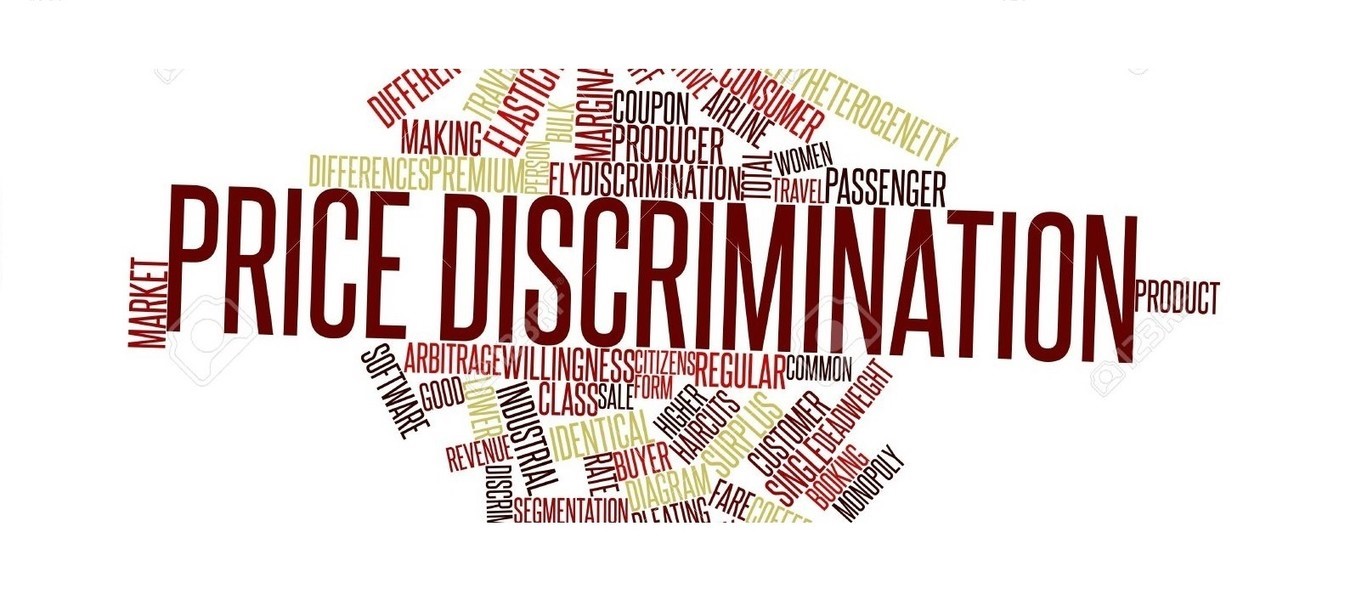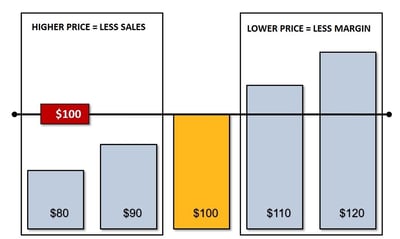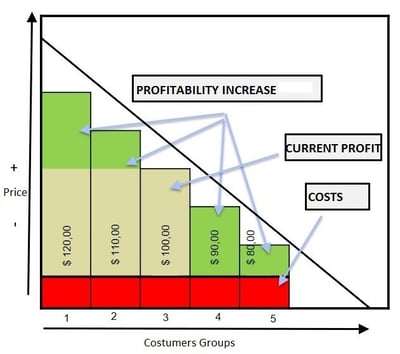Price Discrimination
 PriceBeam
·
3 minute read
PriceBeam
·
3 minute read

by Pedro Piccoli Soares, guest blogger.
Disclaimer: please note that price discrimination may be subject to legal constraints in some countries. You should always seek legal guidance when implementing pricing schemes, and nothing in this article should be construed as suggestions to do something illegal.
Many people believe that there is a relationship in Pricing between the cost of a certain product and its price, however, such connection doesn't really exist when taking the customer's point of view. Customers in general, don't buy products thinking about the cost that the supplier had to produce them; besides they don't have access to this information. What brings a customer to render a purchase is the relationship between the price of the product and the perceived value.
That relationship is very simple: If the customer perceives that the value of an item is larger than the price of it, he will proceed with the purchase. On the other hand, if the perceived value is smaller than the necessary amount of money to acquire the product, the purchase will not happen. Therefore, it is necessary to understand the concept of value. Value is the sum of all of the benefits noticed by the customer when consuming a product or service. Those perceived advantages can be related to economical, functional or emotional / psychological characteristics of the product. Reduction of costs or productivity increases, for instance, can be considered as economical benefits. Better accuracy and speed are reflections of a product that generates functional advantages. A product that increases the consumer confidence, intelligence or that improves his image, is a one that generates emotional / psychological benefits.
Value is the sum of all of the benefits noticed by the customer when consuming a product or service. Those perceived advantages can be related to economical, functional or emotional / psychological characteristics of the product. Reduction of costs or productivity increases, for instance, can be considered as economical benefits. Better accuracy and speed are reflections of a product that generates functional advantages. A product that increases the consumer confidence, intelligence or that improves his image, is a one that generates emotional / psychological benefits.
All of these can seem easy, however, there is a small detail that makes everything much more complex.
Different customers perceive different values or, in other words, the observed value of a certain product/service is not the same for all the people that consume it. Consequently there is a variation in the Willingness to Pay, depending on who is buying it. If the consumers are willing to pay different prices for the same product, why should we charge them the same price?
Think about this example: your friend shows you the new shirt that he bought and tells you that he paid $100 for it. In that moment you think: "That is too expensive, I would not pay more than $80." At the same time your other friend, that really liked the shirt, is thinking that $100 was a very cheap price and that he would be willing to pay $120. That is one simple example of our daily life and it illustrates exactly what was said previously. So, by defining a universal price for the item, the manufacturer of the shirt loses sales for customers like you, that would buy the product for a smaller price and, at the same time, it loses margin from customers such as your other friend, who would pay a higher amount of money for the product.
So, by defining a universal price for the item, the manufacturer of the shirt loses sales for customers like you, that would buy the product for a smaller price and, at the same time, it loses margin from customers such as your other friend, who would pay a higher amount of money for the product.
Price Discrimination is one of the main weapons of Pricing to optimize the financial result of a business. We can say that a company uses that strategy when a given product / service is sold to different groups of customers at different prices, for reasons that are not associated to the costs of it. However, implementing that strategy correctly is not something simple.
First it is necessary to understand the customers, to have strong insights on them, about their willingness to pay and about which factors motivate them to a purchase. The economical factors that influence price (internal and external) and pricing rules (discount politics and payment conditions) are also important as well . Psychological patterns of the customer are essential too, including for B2B transactions. The next step is to segment. Divide your customers in groups according to consumption characteristics that are relevant for your business. Customers that buy daily and monthly; Customers that buy online and in a store; Customers that program purchases and the ones that ask for delivery with urgency; etc. The segmentation is the most important part because you will analyze what factors influence the willingness to pay of your customers. After that, set a price for each perceived value of your customers. An exact price will never exist, but you can vary it, analyzing the price elasticity until finding out which price brings the best result for your company.
The next step is to segment. Divide your customers in groups according to consumption characteristics that are relevant for your business. Customers that buy daily and monthly; Customers that buy online and in a store; Customers that program purchases and the ones that ask for delivery with urgency; etc. The segmentation is the most important part because you will analyze what factors influence the willingness to pay of your customers. After that, set a price for each perceived value of your customers. An exact price will never exist, but you can vary it, analyzing the price elasticity until finding out which price brings the best result for your company.
By doing this, your company will begin to work with strategic pricing basing on the value that each group of customers notices in their products. Don't forget that, as each group that you segmented sees a value for your product, the communication of value should follow the same logic. The key is to demonstrate the value of what is being sold for the customer in the best way, this is one of the key principles for pricing optimization.
Price discrimination is not anti-ethics and also not immoral, it is just good business for everyone. Flight companies and hotels don't charge the same price for customers that buy in advance and for those that accomplish the purchase on top of the hour. Physical stores usually have higher prices when compared to online stores and big restaurants companies often set different prices in their menu according on the city that they are operating.
Anyway, think about ways of structuring that practice in your company without causing embarrassments or complications with your customers. The idea is that the consumers must not feel prejudiced in relation to other consumer, but that all of them feel as if they are making a great purchase.
This article was written by a guest blogger. To learn more about the author, please visit: https://www.linkedin.com/in/pedro-piccoli-soares/
.png?width=400&height=100&name=PBLogoTransparent%20(1).png)



